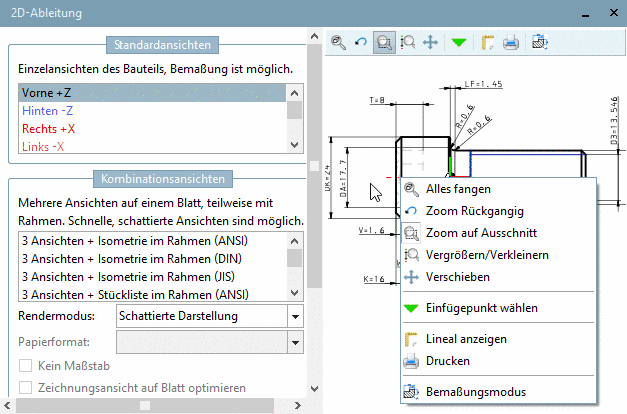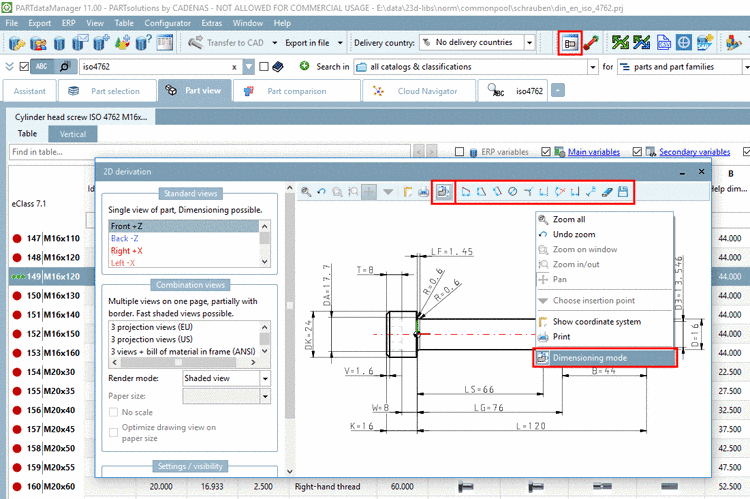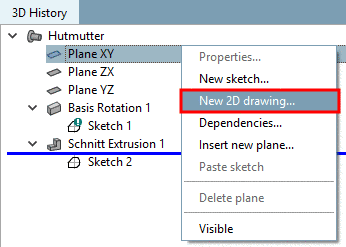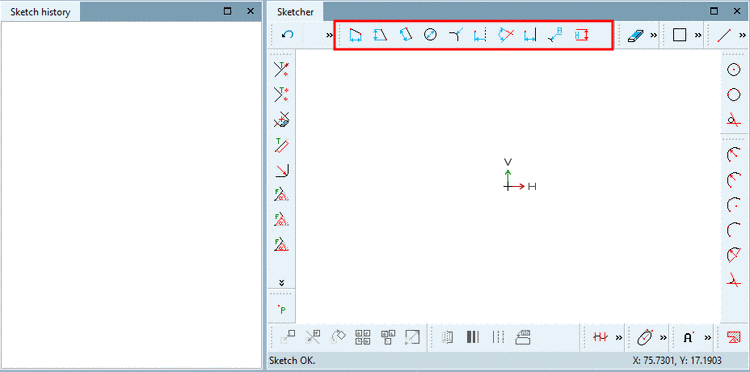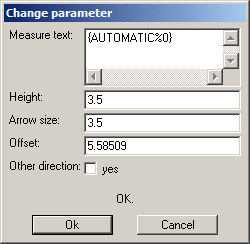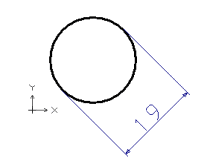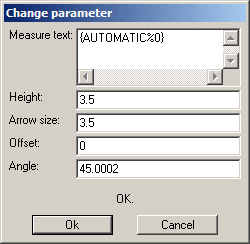Manual
Login
Our 3D CAD supplier models have been moved to 3Dfindit.com, the new visual search engine for 3D CAD, CAE & BIM models.
You can log in there with your existing account of this site.
The content remains free of charge.

Top Links
Manual
-
With the Zoom all button you bring the display of the part onto a balanced measurement. The part is large enough, but still does not protrude over the 3D view window during rotation. If the option Explicit zoom has been set (see Section 3.3.8.4.1, “ Handling ”) the display within the window is maximally enlarged.
-
Zoom on window | Zoom in/out | Pan
![[Note]](/community/externals/manuals/%24%7Bb2b:MANUALPATH/images/note.png)
Note The basic assignment of mouse keys happens under PARTdataManager - > Extras -> Settings... -> 3D settings -> Mouse and keyboard. Details on this can be found under Section 3.3.8.4.2, “ Mouse and keyboard assignment”.
Via context menu command, you can change the assignment of left mouse key.
Turn on the option by clicking on the menu item.
As soon as you move your cursor over a possible insertion point, a catch shows up. Confirm the selection by clicking once.
--> The insertion point is displayed with a green arrow.
Turn off the option by selecting another menu item.
Information about Insertion point can also be found under Chapter 7, PARTdesigner parametric tool in eCATALOGsolutions Manual and Chapter 9, Configurator (Assemblies in PARTdataManager) in eCATALOGsolutions Manual.
You have the opportunity to print the 3D view of the part/assembly.
When clicking on the command the respective settings dialog box of your operation system opens.
The dimensioning mode can be reached in different ways:
-
Via PARTdataManager -> button 2D derivation -> docking window 2D derivation -> context menu command Dimensioning mode or alternatively icon Dimensioning mode
 .
. -
Via PARTdesigner -> docking window 3D History -> context menu Plane -> New 2D drawing...
-> A view with Sketch history and Sketcher is opened.
-
Via PARTdesigner -> File menu -> New drawing
In the following the single functions of Dimensioning mode are explained.
|
|
Radial dimensioning with angle and distance: The angle (concerning the x-axis) of the dimensioning can also be adjusted in the Change parameter window. |
|
![[Note]](/community/externals/manuals/%24%7Bb2b:MANUALPATH/images/note.png) |
Note |
|---|---|
Rotationally symmetrical points are dimensioned from point to line with help of the half value function. Though the depicted dimension line only describes half of the dimensional length (therefore "Half value"), the dimensional value, however the whole dimensional length! | |

